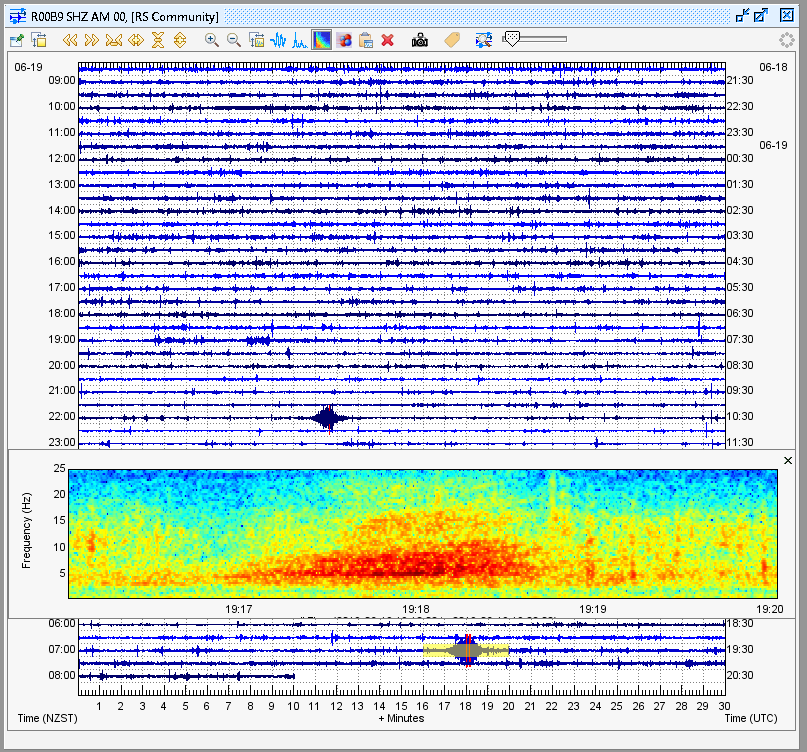Williamstown, MA, US (my hometown) is located along the northern of two main rail routes connecting Boston, MA and Albany, NY, and as such it gets a fair amount of freight rail traffic. This side-by-side compares train noise sensed at the Williams College RS3D (left) to the RS1D in my parents’ house (right) in the early hours of this morning. Both are 1.7-2.0 km from the rail line.
Freight train noise is much more diffuse spectrally than local mechanical noise like washer/dryer or HVAC, and at least in Williamstown, occupies the 4-8 Hz portion of the frequency spectrum, although that number likely differs based on the speed of the train, the quality of the rail infrastructure, whether or not the cars are loaded, the geologic material between the rails and the seismic station, and probably some other stuff I’m not thinking of.
I used to be a big train nerd when I was a kid so the fact that I can see them passing by like this makes me very happy. I can even tell what direction it’s going based on timing differences (this one was going east to west ![]() ). Excellent procrastination from working on my master’s thesis.
). Excellent procrastination from working on my master’s thesis.
Anyone else have fun train waveforms they’ve come across?

